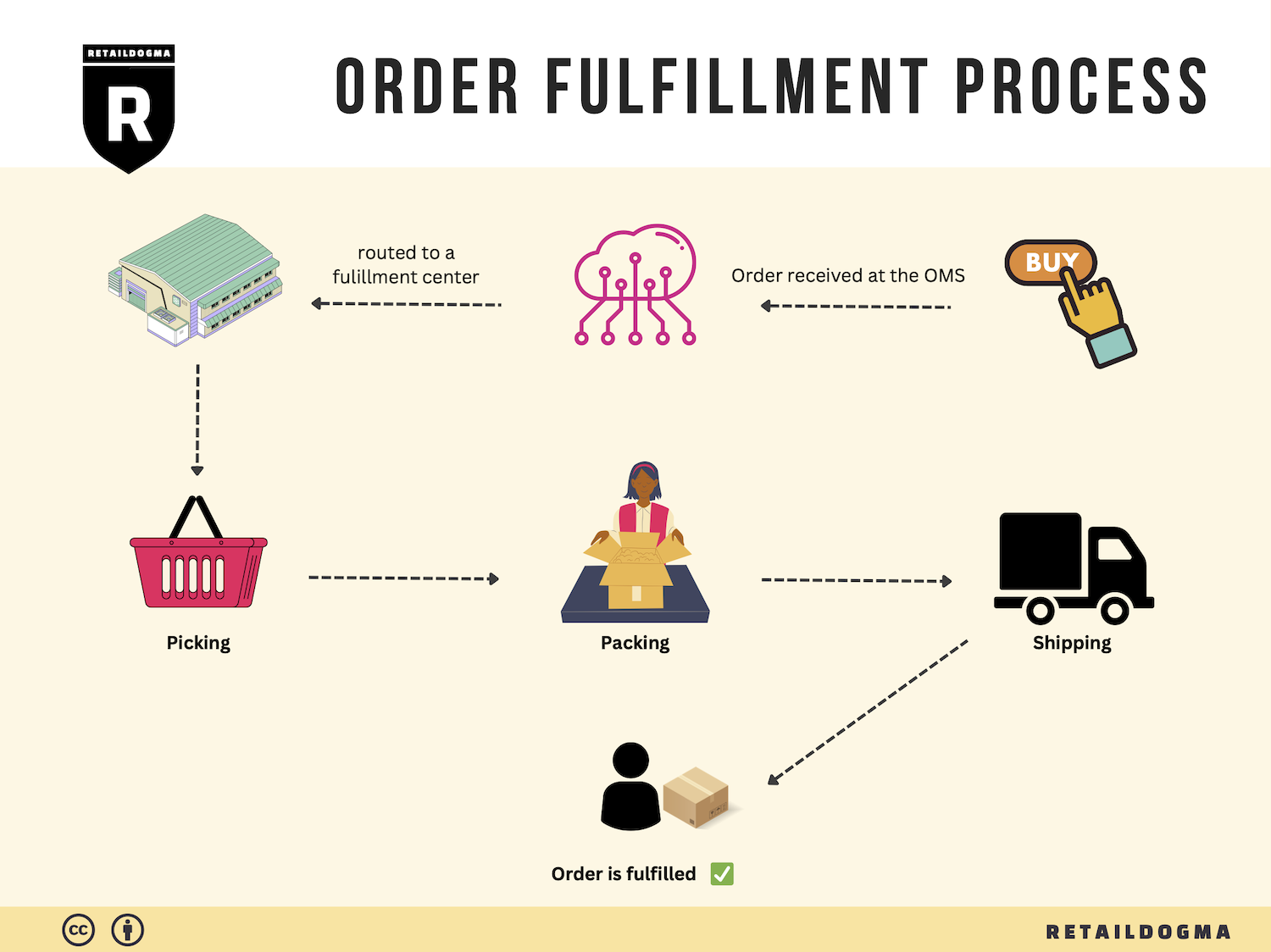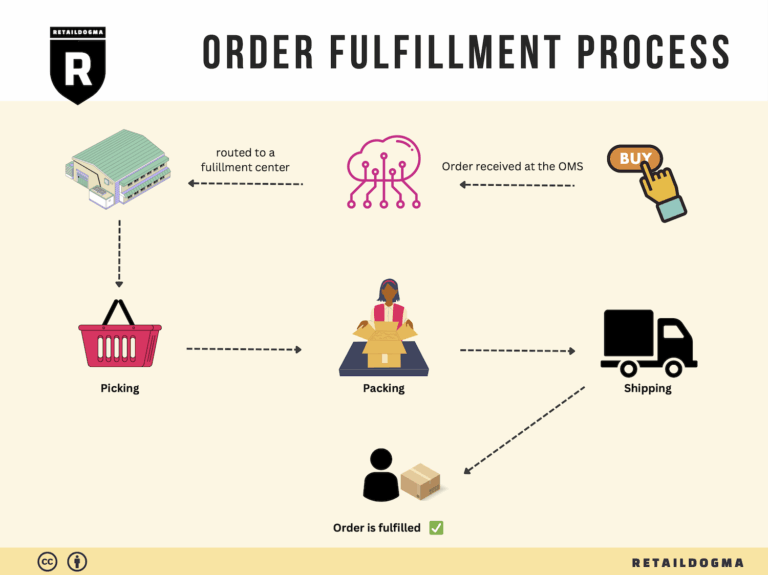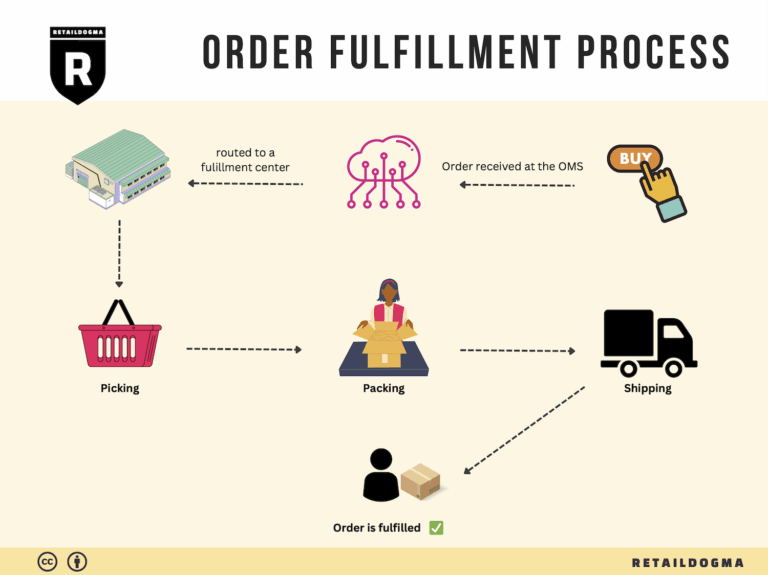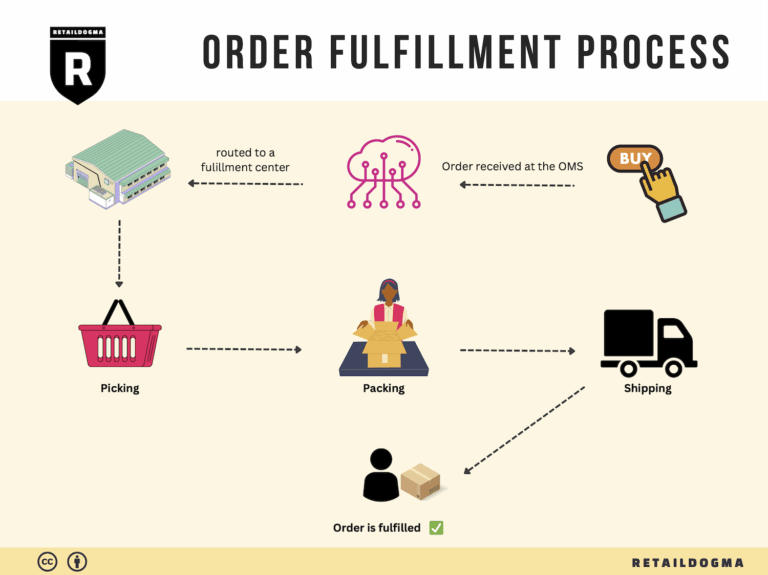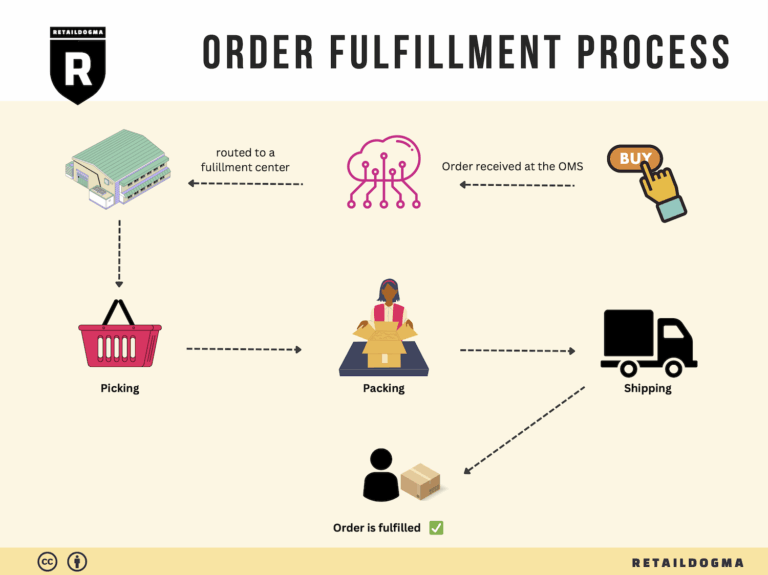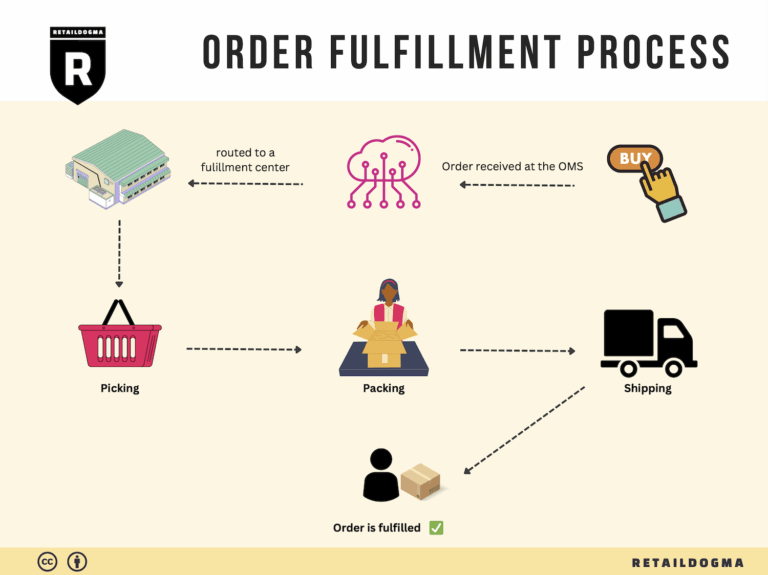How Order Fulfillment Works: A Step-by-Step Guide for Businesses
What is E-commerce Fulfillment? An Introduction for Growing Businesses
Understanding E-commerce Fulfillment: A Key to Scaling Your Business
As an e-commerce business owner, you may find yourself overwhelmed with the daily grind of packing and shipping orders. This is a common pain point for many growing online retailers. The excitement of receiving orders can quickly turn into stress when you face the logistical challenges of getting your products to customers efficiently. Fulfillment, in its simplest form, is the process of receiving, processing, and delivering orders to your customers. However, it’s much more than just packing boxes; it’s a crucial component of your operations that can significantly impact customer satisfaction and your bottom line.
In this guide, we will delve into the various aspects of e-commerce fulfillment, helping you navigate the complexities of logistics as your business scales. You’ll learn about different fulfillment models, such as Third-Party Logistics (3PL) and Fulfillment by Amazon (FBA), each offering unique benefits tailored to different business needs. Understanding these models will enable you to choose the right one for your business strategy.
We will also explore the core services involved in fulfillment, including inventory management, order processing, shipping, and returns handling. Each of these services plays a vital role in ensuring that your customers receive their orders on time and in perfect condition, fostering loyalty and repeat business.
Choosing the right fulfillment partner is another critical decision that can make or break your logistics strategy. We’ll provide practical tips on what to look for in a partner, including their technology capabilities, geographic reach, and customer service standards.
Pricing is always a concern for businesses looking to scale. We will discuss the various pricing structures you might encounter, helping you understand how to evaluate costs against the value provided by different fulfillment options.
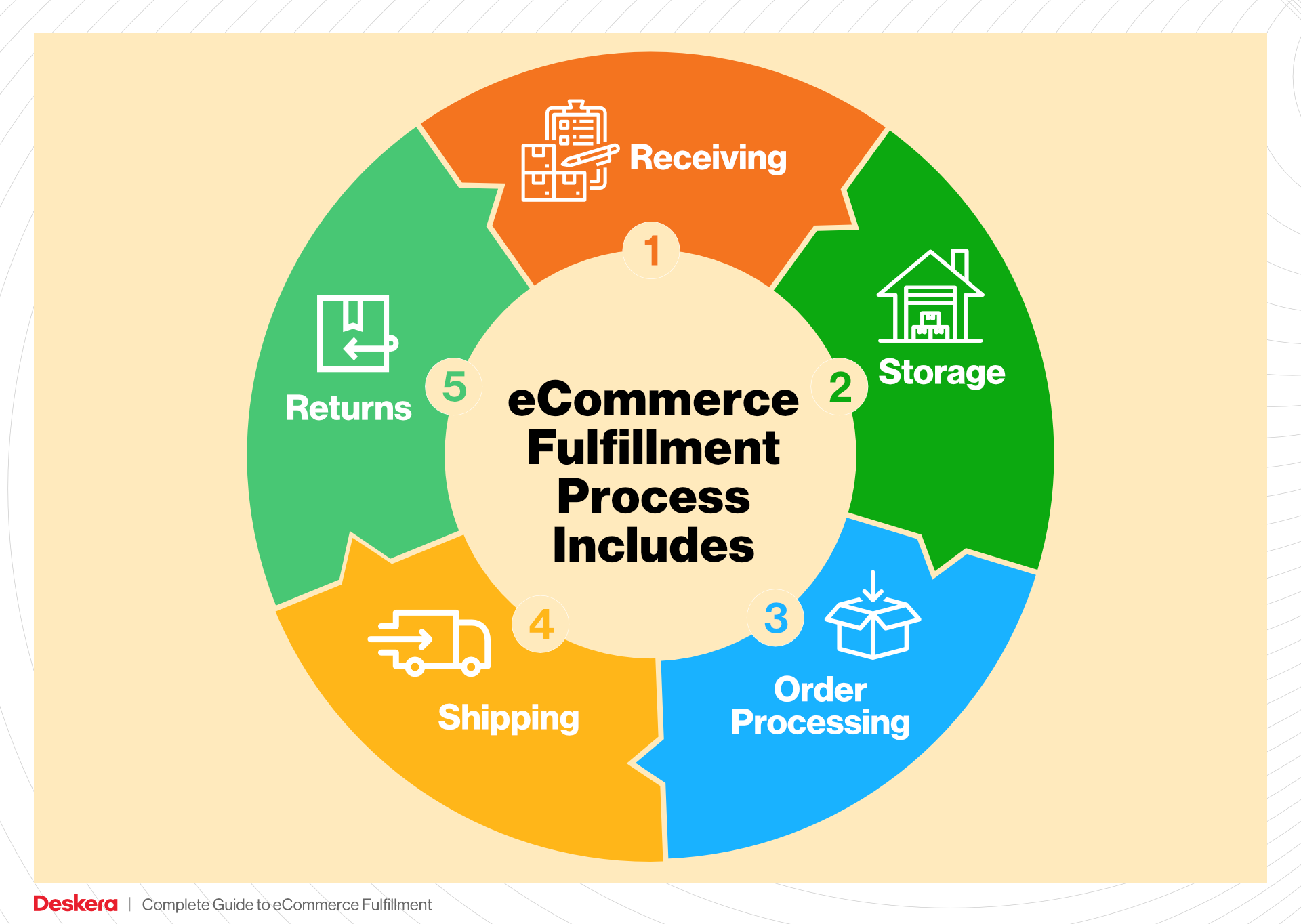
The goal of this guide is to empower you to make informed decisions about your logistics and fulfillment strategies. By understanding the ins and outs of e-commerce fulfillment, you can streamline your operations, enhance customer satisfaction, and ultimately drive your business growth. Let’s get started on this journey to optimize your fulfillment process!
What You’ll Learn In This Guide
- What is E-commerce Fulfillment? An Introduction for Growing Businesses
- The Order Fulfillment Process: From ‘Buy’ Button to Customer’s Door
- Comparing Fulfillment Models: In-House vs. 3PL vs. Dropshipping
- A Deep Dive into Amazon FBA: Pros, Cons, and Who It’s For
- Core Services Offered by Fulfillment Centers
- How to Choose a Fulfillment Partner: A 6-Point Checklist
- Understanding Fulfillment Pricing: A Breakdown of Common Fees
- Frequently Asked Questions (FAQs) about Fulfillment
- Conclusion: Is Outsourcing Fulfillment the Right Move for Your Business?
- Important Disclaimer
The Order Fulfillment Process: From ‘Buy’ Button to Customer’s Door
1. Receiving Inventory
The first step in the order fulfillment process is receiving inventory. This involves the acceptance of products from suppliers or manufacturers into your warehouse or fulfillment center. When inventory arrives, it must be checked against purchase orders to ensure accuracy in quantity and quality. This step is crucial because discrepancies can lead to stockouts or overstock situations, impacting your ability to fulfill customer orders promptly.
Key terms associated with this stage include SKU (Stock Keeping Unit), which is a unique identifier for each product. Using SKUs allows for easy tracking of items and helps in inventory management systems. Properly managing this step ensures that your stock levels are accurately recorded, setting a solid foundation for the rest of the fulfillment process.
2. Warehouse Storage
Once inventory is received, it must be organized and stored effectively in the warehouse. This involves determining the optimal locations for products based on various factors such as size, weight, and demand frequency. Efficient warehouse storage is critical as it affects the speed and accuracy of order fulfillment.
Key terms to understand in this phase include bin location and inventory management systems. Bin location refers to the specific spots within the warehouse where products are stored. A well-organized storage system minimizes the time spent searching for items, thereby enhancing productivity. By employing inventory management systems, businesses can track stock levels, manage reorders, and analyze sales trends, leading to more informed purchasing decisions.
3. Order Picking
Order picking is the process of retrieving products from their storage locations to fulfill customer orders. This step is vital as it directly impacts order accuracy and delivery speed. Efficient order picking can significantly reduce the time it takes from when an order is placed to when it is shipped.
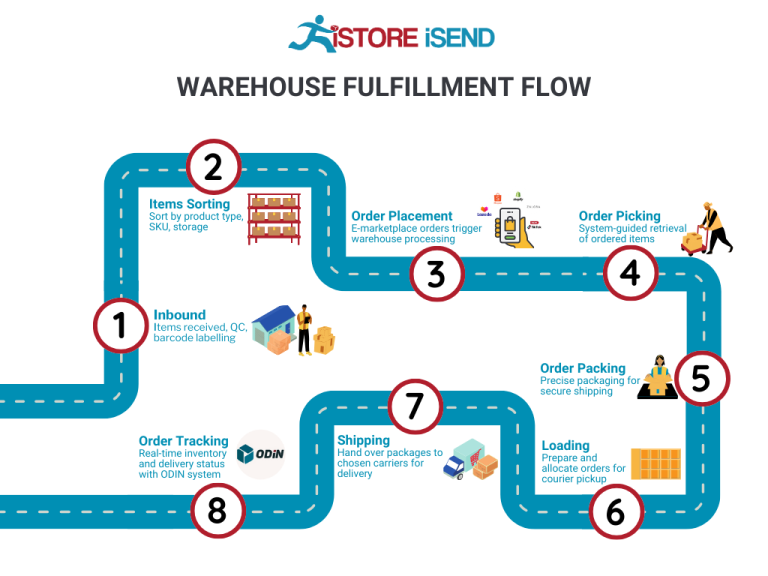
A key term here is pick lists, which are documents or digital tools that outline the items and quantities needed for each order. Utilizing pick lists helps streamline the picking process and ensures that the correct items are selected. Various picking methods can be employed, such as single order picking, batch picking, or zone picking, depending on the size and complexity of the orders. An effective picking strategy can lead to increased efficiency and customer satisfaction.
4. Order Packing
After the items are picked, the next step is order packing. This involves securely packaging the products to ensure they arrive at the customer’s doorstep in perfect condition. Proper packing is not only about protecting the items; it also includes labeling and preparing the package for shipment.
Key terms associated with this phase include packing slips and shipping labels. A packing slip is a document that lists the items included in the shipment and is often included in the package. Shipping labels contain the destination address and tracking information, enabling customers to monitor their orders. Effective packing processes can reduce return rates and enhance the overall customer experience, making it a critical component of the fulfillment cycle.
5. Shipping & Delivery
The final step in the order fulfillment process is shipping and delivery. This involves selecting the appropriate shipping method and carrier to ensure timely delivery of the package to the customer. This step is crucial as it impacts customer satisfaction and can influence repeat business.
Key terms to consider are shipping methods and last-mile delivery. Shipping methods may include standard shipping, expedited shipping, or same-day delivery, each with different costs and delivery times. Last-mile delivery refers to the final leg of the delivery journey, from the distribution center to the customer’s door. Efficient management of this step is essential for meeting customer expectations and can be a competitive differentiator in the e-commerce landscape.
By understanding and optimizing each of these steps in the order fulfillment process, e-commerce businesses can effectively scale their operations, improve customer satisfaction, and enhance their overall logistics strategy.
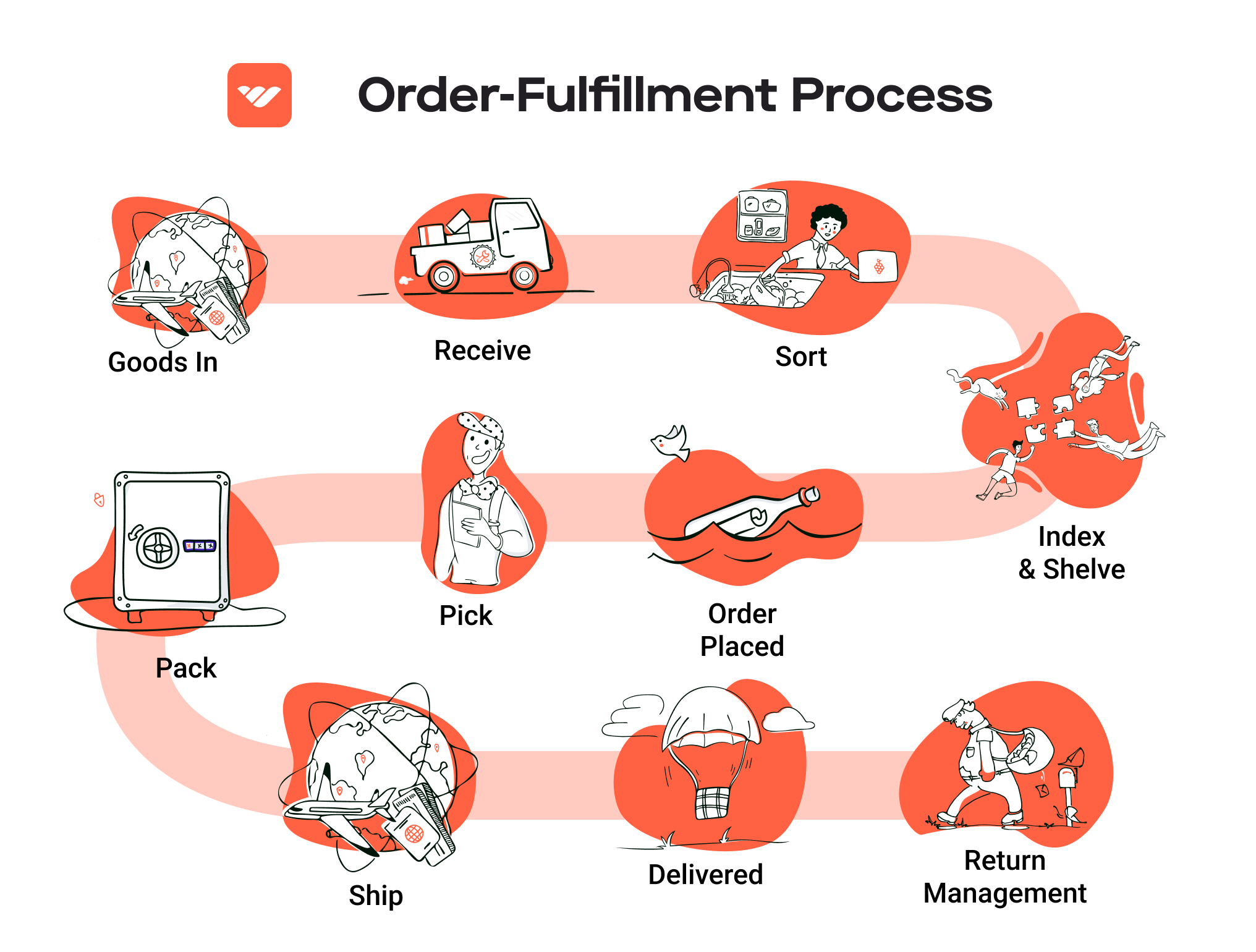
Comparing Fulfillment Models: In-House vs. 3PL vs. Dropshipping
Fulfillment Model Comparison
| Model | Who Handles Inventory | Best For (Business Stage) | Key Advantage | Key Disadvantage |
|---|---|---|---|---|
| In-House Fulfillment | The business itself | Startups to established businesses | Complete control over operations | High overhead and fixed costs |
| Third-Party Logistics (3PL) | A third-party provider | Growing businesses | Scalability and expertise | Less control over inventory |
| Dropshipping | Supplier or manufacturer | Startups and small businesses | Low startup costs | Lower profit margins and dependency |
In-House Fulfillment
In-house fulfillment involves managing all aspects of inventory and shipping within your own facilities. This model is ideal for businesses that have established a solid customer base and require complete control over their operations. By handling inventory internally, companies can ensure quality control, customize packaging, and respond quickly to customer inquiries. However, this model comes with significant overhead costs, including warehousing, staffing, and technology investments. For startups, the initial capital outlay can be a barrier, while for established businesses, the challenge lies in maintaining efficiency and managing fluctuating demand. In-house fulfillment allows for a more personalized customer experience, but as businesses scale, they must continually assess whether this model remains cost-effective.
Third-Party Logistics (3PL)
Third-party logistics (3PL) providers offer businesses the opportunity to outsource their fulfillment operations. This model is particularly beneficial for growing companies that want to expand their reach without the burden of managing logistics themselves. A 3PL partner handles inventory storage, order processing, and shipping, allowing businesses to focus on core activities such as marketing and product development. The key advantage of using a 3PL is scalability; businesses can easily adjust their logistics operations based on demand without incurring significant fixed costs. However, the downside is the reduced control over inventory and fulfillment processes, which can lead to discrepancies in service levels and potential customer dissatisfaction. It’s crucial for businesses to select a reliable 3PL partner that aligns with their service expectations and operational goals.
Dropshipping
Dropshipping is a fulfillment model where the retailer does not keep the products in stock but instead transfers customer orders to a supplier, who then ships the products directly to the customer. This model is particularly attractive for startups and small businesses as it requires minimal upfront investment and eliminates the need for inventory management. Retailers can offer a wide range of products without the financial burden of purchasing inventory upfront. However, dropshipping comes with its own set of challenges, including lower profit margins and reliance on suppliers for product quality and delivery times. Additionally, retailers have limited control over the fulfillment process, which can affect customer satisfaction. For businesses considering dropshipping, it’s essential to establish strong relationships with suppliers and maintain transparency with customers regarding shipping times and product availability.
Conclusion
Choosing the right fulfillment model is a critical decision for e-commerce businesses looking to scale. Each model—In-House, 3PL, and Dropshipping—has its unique advantages and challenges. Business owners must carefully evaluate their current stage, operational needs, and growth ambitions to determine which model aligns best with their strategic goals. As businesses evolve, they may also find that a hybrid approach, combining elements of different fulfillment models, could provide the flexibility and efficiency they need to thrive in a competitive marketplace.
A Deep Dive into Amazon FBA: Pros, Cons, and Who It’s For
Understanding Fulfillment by Amazon (FBA)
Fulfillment by Amazon (FBA) is a service offered by Amazon that enables sellers to store their products in Amazon’s fulfillment centers. Amazon then takes care of storage, packaging, and shipping, as well as customer service and returns for these products. This service allows sellers to leverage Amazon’s vast distribution network and customer base, making it an attractive option for e-commerce businesses looking to scale.
How FBA Works
-
Product Listing and Inventory: Sellers create product listings on Amazon and send their inventory to Amazon’s fulfillment centers. Each product is assigned a unique Amazon Standard Identification Number (ASIN).
-
Storage: Once the products arrive at the fulfillment center, they are stored until sold. Amazon handles the storage logistics, allowing sellers to focus on other aspects of their business.
-
Order Fulfillment: When a customer places an order, Amazon picks, packs, and ships the product on behalf of the seller. This process often results in faster shipping times, especially for Prime members.
-
Customer Service and Returns: Amazon manages customer service inquiries and handles returns, relieving sellers of these burdens and enhancing the customer experience.
-
Fees: Sellers pay various fees for using FBA, including storage fees for inventory held in Amazon’s warehouses and fulfillment fees per unit sold, which cover picking, packing, and shipping.
Pros of Using FBA
-
Prime Eligibility: Products fulfilled by Amazon are automatically eligible for Amazon Prime, which can significantly increase sales. Prime members often prefer items with faster shipping options, leading to higher conversion rates for FBA sellers.
-
Customer Trust: Leveraging Amazon’s reputation can enhance customer trust. When buyers see “Fulfilled by Amazon,” they are more likely to feel confident in their purchase due to Amazon’s established customer service and return policies.
-
Multi-Channel Fulfillment: FBA allows sellers to fulfill orders from other sales channels, such as their own websites, using Amazon’s infrastructure. This flexibility can streamline operations for businesses selling across multiple platforms.
-
Scalability: FBA is designed for scalability. As sales increase, sellers can send more inventory to Amazon without needing to invest in their own warehousing or shipping infrastructure.
-
Reduced Operational Burden: By outsourcing logistics to Amazon, sellers can focus more on product development, marketing, and sales strategies, rather than day-to-day fulfillment operations.
Cons of Using FBA
-
High Fees: FBA fees can add up quickly, impacting profit margins. Sellers must account for both storage and fulfillment fees, which can be particularly high for slow-moving inventory.
-
Strict Inventory Rules: Amazon has specific inventory management rules that sellers must adhere to. Non-compliance can lead to additional fees or even account suspension. Sellers need to be diligent about inventory levels and product condition.
-
Commingling Risks: FBA uses a commingling method for inventory, meaning that products from different sellers may be stored together. This can lead to challenges if customers receive a product that is not in the expected condition or from a different seller, potentially affecting the seller’s reputation.
-
Limited Control: Sellers may feel a lack of control over their inventory and fulfillment process. Decisions regarding shipping, packaging, and customer service are made by Amazon, which may not align with a seller’s brand vision.
-
Accountability: Sellers remain responsible for their products, even when Amazon handles fulfillment. If issues arise, such as damaged goods or shipping errors, the seller must manage customer relations and rectify the situation.
Who is FBA Best For?
FBA is particularly suited for:
-
Small to Medium-Sized E-commerce Businesses: Companies looking to grow without the overhead of managing their own logistics will find FBA appealing. It allows them to take advantage of Amazon’s infrastructure.
-
Sellers with High Sales Volume: Businesses with a steady flow of sales can benefit from the efficiencies of FBA, as the cost per unit decreases with volume.
-
Brands Focused on Customer Experience: Companies that prioritize customer service and fast shipping can enhance their offerings by using FBA, thus improving customer satisfaction.
-
Entrepreneurs Seeking Scalability: For those looking to scale their operations quickly, FBA provides a means to expand product offerings without the need for significant capital investment in logistics.
-
Sellers of Fast-Moving Consumer Goods: Products that sell quickly can leverage FBA’s fast shipping to increase turnover and profitability.
In conclusion, while Fulfillment by Amazon offers numerous advantages such as Prime eligibility and reduced operational burdens, it is crucial for sellers to weigh these benefits against the potential downsides, including high fees and strict inventory management rules. By understanding the intricacies of FBA, e-commerce business owners can make informed decisions that align with their growth strategies.
Core Services Offered by Fulfillment Centers
Inventory Management & Warehousing
Inventory management and warehousing form the backbone of an efficient fulfillment center. This service involves the meticulous tracking, storage, and organization of products within a warehouse. Fulfillment centers utilize sophisticated inventory management software that integrates with e-commerce platforms, allowing businesses to monitor stock levels in real-time, track product movement, and forecast inventory needs.
Benefits:
1. Optimized Stock Levels: By maintaining accurate inventory records, fulfillment centers help businesses avoid stockouts and overstock situations. This ensures that popular items are always available for customers, thereby enhancing sales potential.
2. Cost Efficiency: Proper inventory management minimizes holding costs and reduces waste, particularly for perishable goods. Businesses can allocate resources more effectively, optimizing cash flow and profitability.
3. Scalability: As businesses grow, their inventory needs can change rapidly. Fulfillment centers provide scalable warehousing solutions that can adapt to fluctuating demands, allowing businesses to expand without the overhead of managing their own storage facilities.
Pick and Pack Services
Pick and pack services streamline the order fulfillment process by efficiently selecting products from the warehouse and preparing them for shipment. This process involves “picking” the items ordered by customers and “packing” them securely for delivery. Fulfillment centers employ trained staff and automated systems to ensure accuracy and speed in this crucial stage of the supply chain.
Benefits:
1. Speed and Accuracy: With dedicated staff and advanced technology, fulfillment centers can process orders quickly, reducing lead times and improving customer satisfaction. High accuracy rates in picking reduce the chances of errors, which can lead to returns and dissatisfied customers.
2. Custom Packaging Options: Many fulfillment centers offer customizable packing solutions, allowing businesses to enhance their brand image through packaging. This can include branded boxes, inserts, and eco-friendly materials, which can improve the customer experience and encourage repeat business.
3. Efficient Order Processing: By outsourcing pick and pack services, businesses can focus on core activities such as marketing and product development, rather than getting bogged down in logistics. This operational efficiency can lead to improved business growth.
Kitting and Assembly
Kitting and assembly services involve the grouping of individual items into ready-to-sell sets or kits. This service is particularly beneficial for businesses that offer products that are often purchased together or require assembly before use, such as electronics or DIY products.
Benefits:
1. Enhanced Customer Appeal: Kitting can increase the attractiveness of product offerings by providing customers with bundled items at a discounted price. This not only boosts sales but also enhances the perceived value of the products.
2. Simplified Shipping: By consolidating multiple items into a single package, businesses can streamline their shipping processes and reduce shipping costs. This is especially important for e-commerce businesses looking to maximize profitability while maintaining competitive shipping rates.
3. Efficient Product Launches: When launching new products, kitting services allow businesses to prepare promotional bundles quickly, enabling them to capitalize on market trends and consumer demand more effectively.
Returns Management (Reverse Logistics)
Returns management, or reverse logistics, is a crucial service offered by fulfillment centers that deals with the process of handling returned goods. This includes receiving, inspecting, restocking, or disposing of returned items, which can significantly impact customer satisfaction and retention.
Benefits:
1. Streamlined Return Processes: Fulfillment centers provide efficient systems for processing returns, making it easier for customers to return products. This can enhance customer loyalty and encourage repeat purchases, as customers are more likely to shop with businesses that offer hassle-free return policies.
2. Cost Recovery: By inspecting returned products and determining their resale potential, fulfillment centers help businesses recover costs associated with returns. This can involve restocking items that are still in sellable condition or refurbishing damaged goods.
3. Data Insights: Returns management systems can provide valuable data about customer preferences and product performance. Analyzing return reasons can help businesses identify quality issues, improve product offerings, and refine marketing strategies to reduce future returns.
By leveraging these core services offered by fulfillment centers, e-commerce businesses can enhance their operational efficiency, improve customer satisfaction, and ultimately scale their sales and logistics effectively. Each service not only contributes to a smoother supply chain but also provides strategic advantages that can differentiate a business in the competitive e-commerce landscape.
How to Choose a Fulfillment Partner: A 6-Point Checklist
Location & Warehouse Network
Importance:
The geographical location of your fulfillment partner’s warehouses significantly impacts shipping times and costs. A partner with strategically placed warehouses can help reduce transit times and improve customer satisfaction.
Questions to Ask:
– How many warehouses do you operate, and where are they located?
– Can you provide shipping estimates for my target markets?
– How do you handle shipping logistics for international orders?
Technology & Integrations
Importance:
In today’s e-commerce landscape, seamless technology integration is crucial for real-time inventory management, order tracking, and data analytics. A partner with advanced technology can streamline operations and provide valuable insights.
Questions to Ask:
– What fulfillment management software do you use, and is it compatible with my e-commerce platform?
– How do you manage inventory accuracy and updates?
– Can you provide API access for custom integrations and reporting?
Specializations (e.g., cold storage, oversized items)
Importance:
Different products require different handling and storage conditions. If your business involves unique items (like perishables or oversized goods), it’s vital to choose a partner with the necessary specializations.
Questions to Ask:
– Do you have specialized facilities (e.g., climate-controlled storage, oversized item handling)?
– What experience do you have with products similar to mine?
– How do you ensure compliance with industry regulations regarding product storage?
Scalability & Capacity
Importance:
As your business grows, your fulfillment needs will change. A partner that can scale with you ensures that you won’t face bottlenecks during peak seasons or when launching new products.
Questions to Ask:
– What is your current capacity, and how do you handle peak demand periods?
– Can you accommodate rapid growth or seasonal spikes in orders?
– What is your process for expanding warehouse space or capabilities?
Pricing and Contracts
Importance:
Understanding the cost structure and contract terms is essential for budgeting and ensuring profitability. Transparent pricing helps avoid unexpected fees that can erode margins.
Questions to Ask:
– What is included in your pricing model (e.g., storage, picking, shipping)?
– Are there any hidden fees or surcharges I should be aware of?
– What are the contract terms, and how flexible are they in case my needs change?
Customer Support & Reviews
Importance:
Reliable customer support is crucial for resolving issues quickly and maintaining smooth operations. Additionally, researching reviews can provide insights into the partner’s reputation and reliability.
Questions to Ask:
– What support channels do you offer (e.g., phone, email, chat), and what are your response times?
– Can you provide references or case studies from similar businesses?
– How do you handle issues with orders, and what is your process for communicating updates?
Final Thoughts
Choosing the right fulfillment partner is a critical step for e-commerce success. By addressing these key areas, you can ensure that your partner aligns with your business goals and can support your growth effectively. Take the time to evaluate potential partners thoroughly, ask the right questions, and select one that not only meets your current needs but can also adapt to your future requirements.
Understanding Fulfillment Pricing: A Breakdown of Common Fees
Initial Setup Fees
Initial setup fees are one-time charges associated with onboarding your business into a fulfillment center. These fees can vary significantly based on the complexity of your operation and the specific requirements of the fulfillment provider. Typically, they cover the costs of establishing your account, setting up inventory management systems, and any necessary integrations with your e-commerce platform.
Factors that can influence the initial setup fee include:
- Inventory Volume: Larger inventories may require more extensive setup processes, increasing costs.
- System Integrations: If your business requires custom software integrations for order processing, this can add to the initial fee.
- Training: Some providers offer training sessions for your team, which may be included in the setup fee or charged separately.
To negotiate these fees, consider discussing your volume projections and any specific needs that may reduce setup complexity.
Receiving Fees
Receiving fees are charged each time your inventory arrives at the fulfillment center. These fees can be calculated based on the number of pallets, the total weight of the shipment, or the number of individual items received.
The factors that influence receiving fees include:
- Volume of Inventory: Higher volumes may qualify for lower per-unit costs.
- Condition of Goods: If products require inspection or special handling due to their condition, additional charges may apply.
- Complexity of Receiving: If your products come in mixed pallets or require special sorting, this can increase receiving costs.
To manage receiving fees, plan shipments in bulk to minimize the frequency of deliveries and ensure they are organized for efficient processing.
Storage Fees (per pallet/bin)
Storage fees are ongoing charges for keeping your inventory in the fulfillment center. These fees are usually calculated on a monthly basis and can be based on the space your products occupy, typically measured in pallets or bins.
Key considerations for storage fees include:
- Inventory Turnover Rate: Slow-moving items may incur higher storage fees, especially if they occupy significant space for extended periods.
- Seasonal Demand: During peak seasons, storage rates may increase due to higher demand for warehouse space.
- Type of Storage: Some items may require climate-controlled storage, which can lead to higher fees.
To optimize storage costs, regularly review your inventory turnover and consider implementing just-in-time inventory practices to minimize excess stock.
Pick & Pack Fees (per item/order)
Pick and pack fees are charged for the labor involved in selecting items from the warehouse and preparing them for shipment. These fees can be structured as a flat fee per order or charged based on the number of items included in the order.
Factors affecting pick and pack fees include:
- Order Complexity: Orders with multiple items or special packing requirements may incur higher fees.
- Item Size and Weight: Larger or heavier items may require more labor and time to pack, impacting the overall cost.
- Frequency of Orders: Higher order volumes can sometimes lead to discounts on pick and pack fees.
To reduce pick and pack costs, consider optimizing your product catalog to streamline order fulfillment and reduce the number of unique items per order.
Shipping Fees
Shipping fees cover the costs associated with transporting your products to customers. These fees can vary based on several factors, including the shipping carrier, destination, and service level (standard, expedited, etc.).
Key elements influencing shipping fees include:
- Weight and Dimensions: Heavier and bulkier packages typically incur higher shipping costs.
- Shipping Zones: Costs can vary significantly based on the distance from the fulfillment center to the customer’s location.
- Carrier Agreements: Businesses with negotiated shipping rates may benefit from lower costs compared to standard rates.
To manage shipping expenses, consider leveraging a multi-carrier strategy to find the best rates, and explore options for flat-rate shipping or free shipping thresholds to enhance customer satisfaction.
Tips for Getting an Accurate Quote
To obtain an accurate fulfillment pricing quote, follow these strategies:
- Provide Detailed Information: Be transparent about your product types, order volumes, and specific requirements.
- Request Itemized Quotes: Ask for a breakdown of all potential fees to understand the total cost of fulfillment.
- Compare Multiple Providers: Don’t settle for the first quote; compare offers from various fulfillment centers to find the best fit for your needs.
- Discuss Volume Discounts: Inquire about discounts for increased order volumes or long-term contracts, which can significantly reduce costs.
- Review Contract Terms: Ensure you understand all terms and conditions, including any potential hidden fees or penalties.
By taking these steps, you can ensure you receive a comprehensive and accurate fulfillment pricing quote, allowing you to make informed decisions as you scale your business.
Frequently Asked Questions (FAQs) about Fulfillment
1. What is the fulfillment of prophecy in the Bible?
The fulfillment of prophecy in the Bible refers to the realization of predictions made by biblical prophets regarding future events, particularly those concerning the life and mission of Jesus Christ. These prophecies often serve to affirm the sovereignty of God and His plan for humanity, showcasing the consistency and reliability of Scripture.
2. How can businesses apply the concept of prophecy fulfillment to their operations?
Businesses can draw parallels between the fulfillment of prophecies and strategic planning. Just as prophecies outline expected outcomes, businesses should set clear goals and measurable milestones. This approach allows them to assess progress and adapt strategies as necessary, ensuring they remain aligned with their long-term vision.
3. What’s the difference between a warehouse and a fulfillment center?
A warehouse is primarily a storage space for goods, while a fulfillment center is designed to handle the entire order processing workflow. Fulfillment centers not only store products but also manage inventory, pick and pack orders, and ship them directly to customers. This differentiation is crucial for e-commerce businesses aiming to enhance efficiency and customer satisfaction.
4. What is a 3PL (Third-Party Logistics)?
A 3PL, or Third-Party Logistics provider, is a service that manages a company’s logistics operations, including warehousing, inventory management, and shipping. Outsourcing to a 3PL can help businesses scale operations by leveraging the provider’s expertise, technology, and network to improve delivery times and reduce costs.
5. How much do fulfillment services cost?
The cost of fulfillment services varies widely based on factors such as the volume of orders, type of products, and specific services required (e.g., storage, packaging, shipping). On average, businesses might expect to pay between $2 to $5 per order for basic fulfillment services, but it’s essential to evaluate quotes from multiple providers to find the best fit for your needs.
6. What role do prophecies play in the New Testament?
In the New Testament, prophecies primarily focus on the coming of Jesus Christ and the establishment of the Church. Many events in Jesus’ life, such as His birth, death, and resurrection, are seen as fulfillments of Old Testament prophecies, reinforcing the belief in divine orchestration and the continuity of God’s plan.
7. Can the fulfillment of biblical prophecies be verified?
Verification of biblical prophecies often involves historical and textual analysis. Scholars examine archaeological evidence, historical records, and the context of prophecies to assess their fulfillment. While some prophecies have clear historical counterparts, others may remain open to interpretation, leading to ongoing scholarly debate.
8. How should businesses prepare for unexpected challenges in fulfillment?
Businesses should develop a robust contingency plan that includes diversifying suppliers, maintaining safety stock, and leveraging technology for real-time inventory tracking. Regularly reviewing and updating these plans helps businesses remain agile and responsive to unforeseen disruptions, similar to how the fulfillment of prophecies often entails readiness for changes in circumstances.
9. What is the significance of fulfillment in biblical prophecy for believers?
For believers, the fulfillment of biblical prophecy serves as a testament to God’s faithfulness and sovereignty. It reassures them that God’s promises are reliable, instilling hope and trust in His overarching plan for humanity. This assurance can be paralleled in business, where trust in a well-executed strategy can drive confidence and motivation among team members.
10. How can understanding biblical prophecy fulfillment influence a business’s ethical practices?
Understanding the fulfillment of biblical prophecies can inspire businesses to operate with integrity and purpose, reflecting values such as honesty, accountability, and stewardship. Just as prophecies aim to fulfill a greater good, businesses can align their practices with ethical standards that contribute positively to society, fostering a culture of responsibility and trust.
Conclusion: Is Outsourcing Fulfillment the Right Move for Your Business?
The Case for Outsourcing Fulfillment
In today’s fast-paced e-commerce landscape, the decision to outsource fulfillment can be a game-changer for your business. By leveraging a fulfillment service, you can save valuable time that can be redirected towards strategic growth initiatives. Instead of managing inventory, packing orders, and navigating shipping logistics, you can focus on enhancing your product offerings and customer experience.
Scalability is another significant advantage of partnering with a fulfillment provider. As your business grows, so do the complexities of order management. A reliable fulfillment partner can seamlessly scale operations to meet increasing demand, ensuring that your customers receive their orders promptly and accurately, regardless of seasonal fluctuations or unexpected surges in sales.
Moreover, working with a specialized fulfillment service brings expertise that can enhance operational efficiency. These providers have established processes, advanced technology, and a wealth of experience that can help mitigate common logistical challenges. By tapping into this expertise, you can improve delivery times, reduce shipping costs, and enhance overall customer satisfaction.
However, the success of outsourcing fulfillment hinges on selecting the right partner. It’s crucial to evaluate potential providers based on their service offerings, technology capabilities, and track record of reliability. A well-chosen partner will align with your business goals and contribute to your growth trajectory.
As you consider the benefits of outsourcing fulfillment, take a moment to audit your current shipping processes. Are they efficient and scalable? If you find gaps or inefficiencies, it may be time to explore fulfillment partnerships. This strategic move could not only streamline your operations but also position your business for sustainable growth in an increasingly competitive market.
Important Disclaimer
⚠️ Important Disclaimer
The information in this guide is for educational purposes. Fulfillment services, pricing, and platform features change frequently. Always conduct your own due diligence and consult with providers directly before making business decisions.
